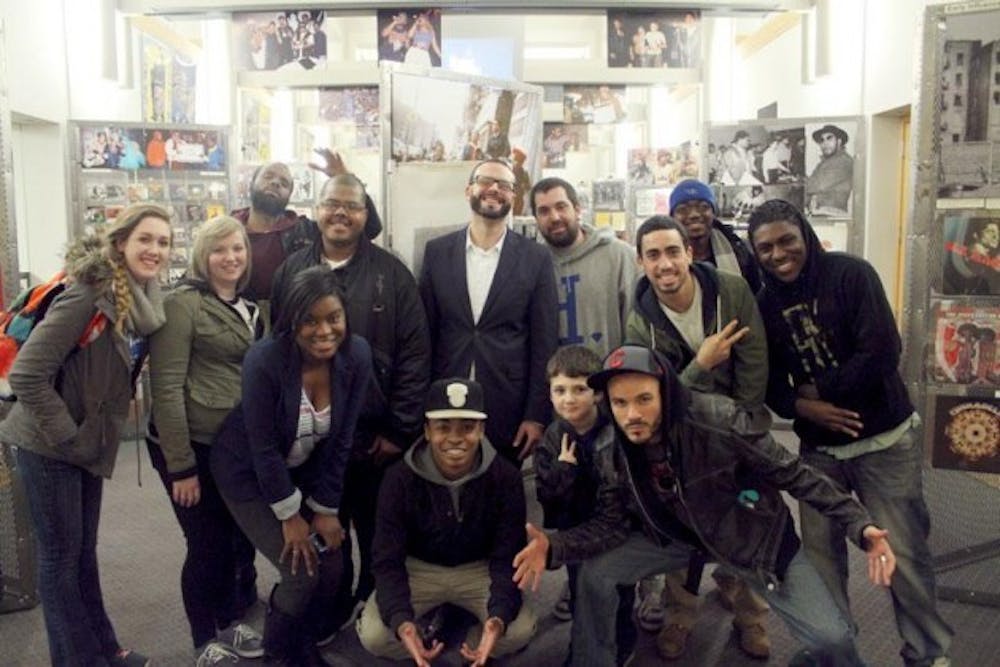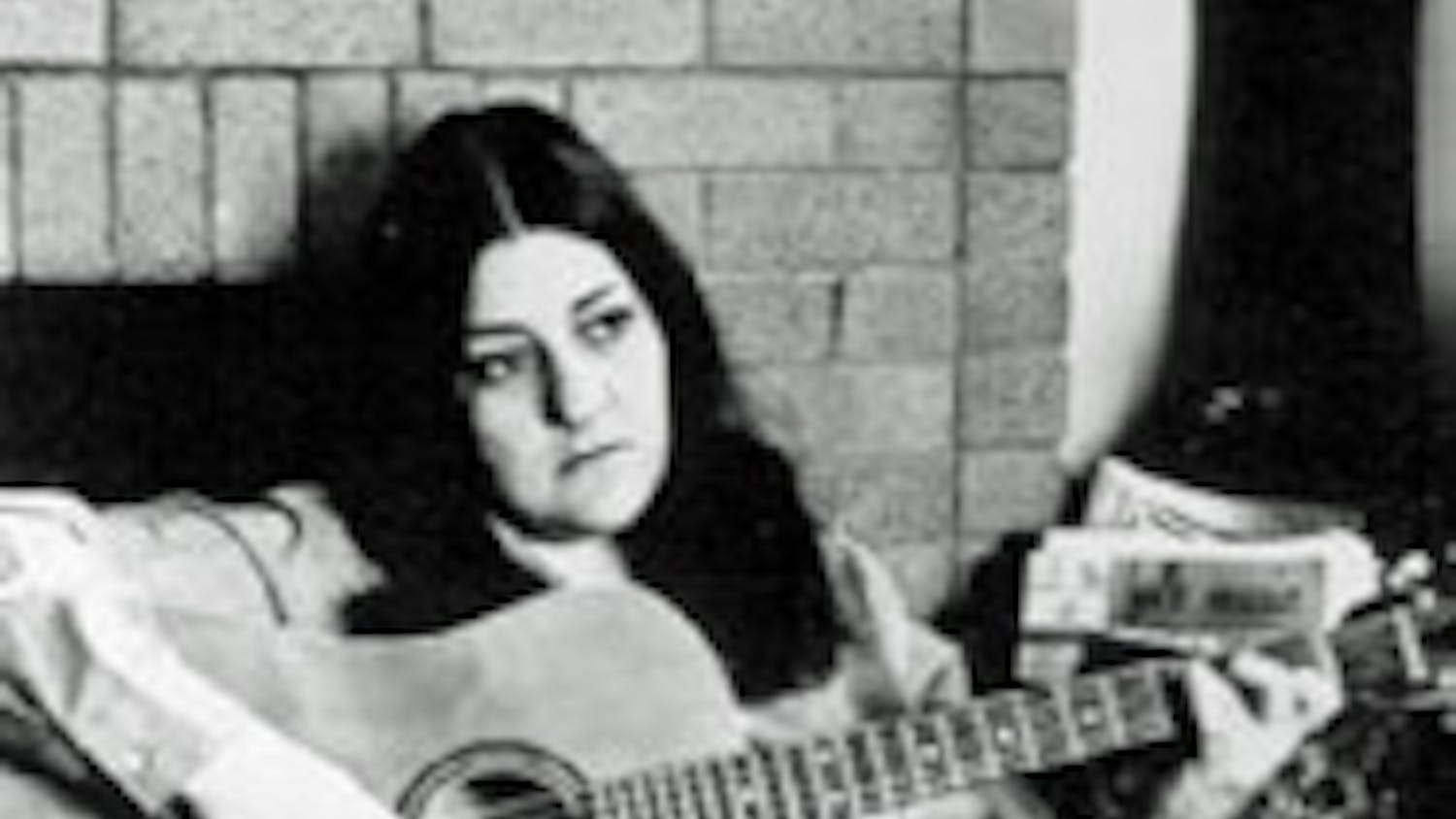Beats, rhymes, pimps and hoes.
According to Justin De Senso, professor of AAS 117, "Hip-Hop and Social Issues," this is what people think of when they think of hip-hop.
His course is focused on teaching students to take hip-hop seriously. The class isn't just a place for students to listen to rap songs and analyze lyrics.
"[The course is focused on] trying to map the trajectory of African-American trauma through hip-hop," De Senso said.
Students discuss conflicts in African-American history, gender, race and class, and how the topics are related to the upbringing of the musical genre.
On Friday, AAS 117 students accompanied De Senso on a trip to Cornell University's Hip-Hop Collection (CHHC). CHHC collects historical artifacts of hip-hop culture. Its preservation makes these artifacts accessible for future generations, according to the CHHC website.
Students experienced the history of hip-hop and were exposed to the artifacts, which included party fliers from the late '70s, vinyl records and old spray cans from graffiti artists.
"It's better than what they have at the Smithsonian," De Senso said.
De Senso held this trip to Cornell to make the class as meaningful and memorable as possible for his students. He said it is about the academic takeaway his students can get from the event and that indulging in education is not always about the classroom setting revolving around objectives and learning outcomes.
"It was great to have a real-life visual to things I had been learning about earlier in the semester," said Brieanna Bourdage, a freshman communication design major.
The collection, which opened in 2007, displayed themes that revolved around the four basic elements of hip-hop: the graffiti artists, the DJ, the MC (rapper) and the B-boy (breakdancer).
Multimedia was used to showcase the history of hip-hop. In addition to earphone ports for an audible experience, visitors got the full audiovisual feel through videos and glass-encased pieces. CDs and records from original releases decorate the walls.
De Senso said one the most amazing things he saw there was the archive of the IGTimes - originally called the "International Graffiti Times." It was a worldwide mini magazine, or zine, dedicated to graffiti. Alongside this were letters written by readers from around the world and from different backgrounds.
De Senso said he witnessed numerous handwritten letters from graffiti artists. They would ask for the publication to send things to them so they could keep up with hip-hop and graffiti. Included with many of the letters was their own graffiti art. They would sketch letters out to display the authenticity of their talents and passion for the art.
"Hip-hoppers really wanted to be at the heart of it," De Senso said. "They wanted to feel the pulse and to be in the know."
CHHC Curatorial Assistant Ben Ortiz guided the class. He gave presentations to the students and showed them the composition of hip-hop history.
Ortiz's job at the museum also includes hunting for artifacts. He contacts hip-hop figures for information and fragments from the past. Oftentimes, he asks for graffiti artists' black books, where graffiti artists practice their art and sketches.
De Senso plans on teaching an AMS 111 course on contemporary popular music and he hopes to bring his prospective students to the CHHC collection as well. The spring class will also be hip-hop based and will focus on either Jay Z or Tupac.
Bourdage said she learned a lot about the social, economic and political implications behind the music and the motivations of the hip-hop artists.
"You start with basics, from hip-hop's birthplace and what influenced its creation," said Joseph Mercedes, a senior communication major. "Then, gradually, you build into the social and political influence it has on the U.S., as well as our debacle with the criminal justice system, among other things."
He said that through the class, he has been able to think critically about the true meaning and purpose of hip-hop. He said it is not what mass media makes it out to be.
De Senso, who had been teaching hip-hop based courses for five years, said that what he teaches is not how people view the genre.
"We think of Drake; we think of Gucci; we think of 2 Chainz or Miley Cyrus," he said. "But we don't think of hip-hop as having these artifacts ... that are worthy of study."
De Senso said that he received an email from one of his higher authorities stating that "hip-hop is a less demanding subject."
De Senso felt it was demeaning hip-hop as a whole.
He later interviewed students on this situation and he said most students were "flabbergasted." He said it takes students responding to the issue in order for the subject to take on a bigger role in the university.
"There are generations on this campus that need to be convinced of the intellectual merits of the value of studying hip-hop and what it offers," he said.
In the past 10 years, the study of hip-hop has grown all across the country.
The University of Arizona has a minor in hip-hop culture, which is under its Africana Studies Program. Harvard University also has a hip-hop archive on its campus. In addition, Harvard recently honored famous rapper Nas by launching the Nasir Jones Hip-Hop Fellowship.
Alex Porco received his Ph.D. from UB in 2011. His focus was rap music.
De Senso's "Hip-Hop and Social Issues" course features a 30-page syllabus dictating every topic in hip-hop, from historical contexts to "social (in) justice." The class demands daily readings, book reviews and research papers.
His class is currently reading The New Jim Crow, which he describes as "not an easy read." The book focuses on the current criminal justice system in relation to Jim Crow and slavery. It also covers social forms of racial oppression.
De Senso hopes to show how students have the interest and desire for the study of hip-hop. He wants to show departmental figures the students' demand for the subject and how complex and intellectually rewarding hip-hop truly is.
email: features@ubspectrum.com





